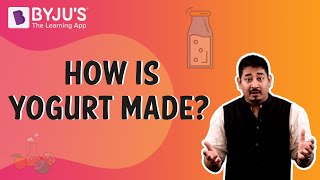Living organisms are exposed to both harmful as well as beneficial bacteria. It is a misconception that bacteria can cause only disease. They have many other properties and functions. They can be friends as well as foes. In general, the ratio of beneficial bacteria is more than the harmful bacteria.
Also Read: Bacteria
Probiotics
Probiotics are a concoction of microorganisms that also includes bacteria. These probiotics contain live bacteria of beneficial nature. They play a vital role in maintaining gut health. They also have other advantages, such as improving immunity, reducing weight, aiding in digestion, etc. In general, they take care of gastrointestinal tract disorders.
Probiotics are generally safe for human consumption. Yoghurts are the most common form of probiotic used by humans.
Pathogenic Bacteria
Pathogens are usually disease-causing microorganisms. Likewise, disease-causing harmful bacteria are termed pathogenic bacteria. These pathogenic bacteria attack their host and damage them directly or indirectly. Thus, they cause infections that need to be treated.
Some pathogenic bacteria can invade the skin surface and mucus, while other advanced ones invade our internal bloodstream.
Differences between Probiotic and Pathogenic Bacteria
Probiotics |
Pathogenic Bacteria |
|
They are beneficial. |
These are harmful disease-causing bacteria. |
|
They do not have any virulence. |
They are virulent enough to induce toxicity. |
|
They do not produce colonies. |
Pathogenic bacteria are known to produce colonies. |
|
They maintain gut health and take care of the gastrointestinal tract. |
They cause severe illness which needs prevention and treatment. |
|
Examples – Lactobacillus sps, Saccharomyces boulardii, Bifidobacterium, etc. |
Examples – Mycobacterium tuberculosis, Clostridium, Streptococcus pneumoniae, etc. |
Also look into Infectious diseases
Frequently Asked Questions
What is meant by the pathogenicity of bacteria?
Pathogenicity is the capacity to deliver illness in a host creature. Microorganisms express their pathogenicity through various means. They attack the host cell by releasing toxins or directly damaging the cells.
What are prebiotics?
Probiotics are live strains of microscopic organisms that also include bacteria. They take care of human gut health. In contrast, prebiotics help in the stimulation of healthy gut bacteria. Prebiotics are generally plant-based sources that are considered as food for beneficial microorganisms.
Can probiotics eliminate pathogenic bacteria?
Probiotics are composed of many beneficial bacteria. They help in maintaining our immune system. Thus, it leads to a healthy body that can fight off harmful bacteria. A few probiotic bacteria can also secrete bacteriocins (antibacterial peptides) that harm other microbes.
Is yeast a probiotic?
Yeast also functions as a probiotic. They help maintain the gastrointestinal tract. For example, Saccharomyces boulardii is a probiotic.

Also Read: Difference between molds and yeasts
Visit BYJU’S Biology for more interesting topics.
Comments